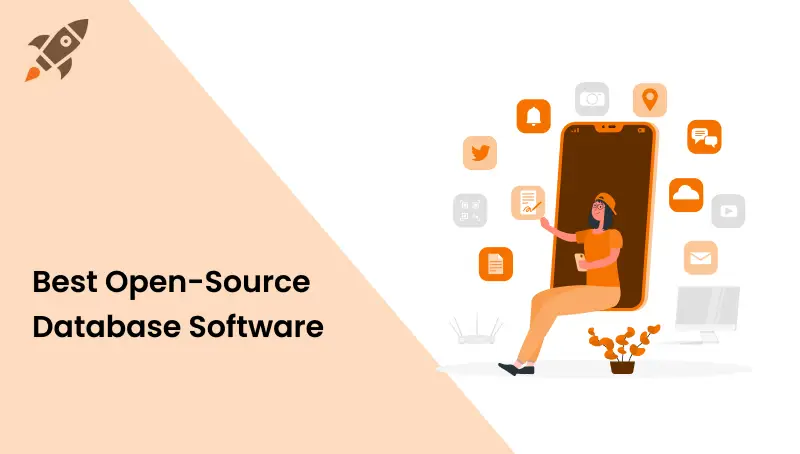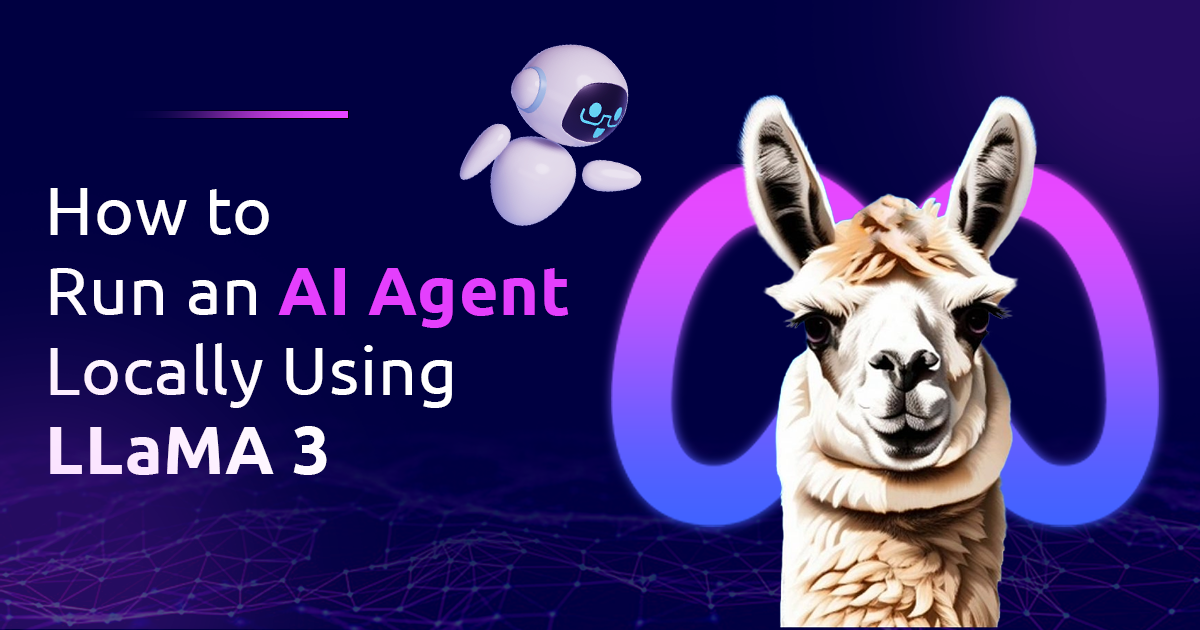In this blog you will find the best Open-source Database Software for 2024 along with their advantages and cost.
Data storage is crucial for programs and applications. As it serves as the foundation for storing copious quantities of applications or web data in an orderly manner, a database is a vital enabler of every web application.
A database’s price, versatility, and level of hosting provider assistance should all be taken into account. The adoption of an open-source database is advised due to its many benefits.
As an illustration, a free database management system (DBMS) won’t set you back any money, and you won’t be subjected to any virtual limitations when using it. And here’s the cherry on top: a number of the most effective database applications are open-source programs.
Also read: 10 Benefits Of Open Source Technology For Enterprises
What is an Open-Source Database Software?
A database is a grouping of data that an application or program keeps and accesses. The database will be located on your server along with other back-end components, including the primary website files and any media you utilize.
For your website, adopting an open-source database might be just as advantageous as utilizing an open-source content management system such as WordPress.
In addition, using an open-source database can relieve you of the financial burden and license constraints associated with proprietary databases, allowing you to concentrate on creating your fantastic application rather than battling the third-party database provider.
Also read: What Is Open Source Software? : A Thorough Analysis
Top Open-Source Database Software In 2024
- MySQL
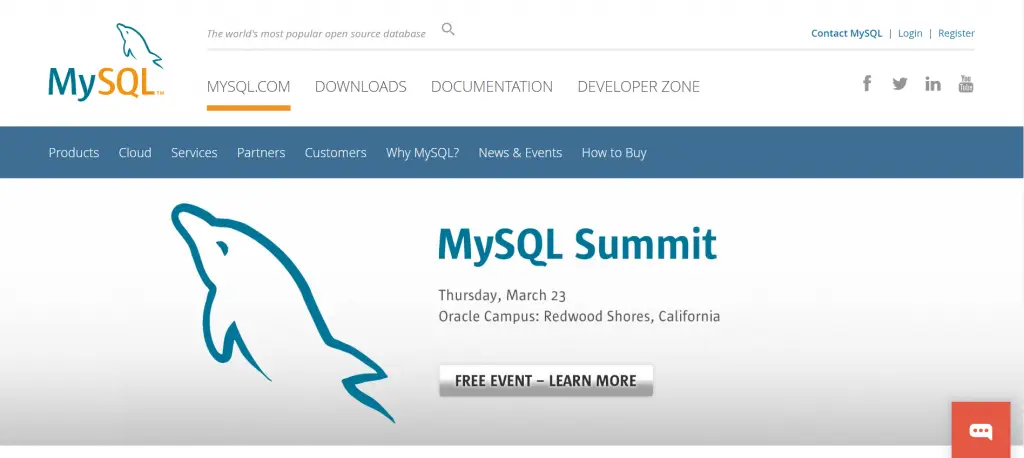
Homepage of MySQL
My SQL is a powerful data productivity tool with quick data processing capabilities. Your databases will be more secure and scalable thanks to the tool. Technical assistance is provided, and potential hazards are mitigated, using dependable, cost-effective technology.
Additionally, complicated MySQL applications with a business focus can be deployed on high-volume company websites.
Advantages of MySQL:
- The fundamentals are simple to master even without prior programming experience.
- Due to the nature of open-source software, users have total freedom to change data.
- A low-cost framework that is ideal for small enterprises and entrepreneurs.
- Data development can be tailored for both light and heavy programs and applications.
Cost:
MySQL Standard, Enterprise, and Cluster Carrier Grade editions are set at $2,000, $5,000, and $10,000 respectively.
- Improvado
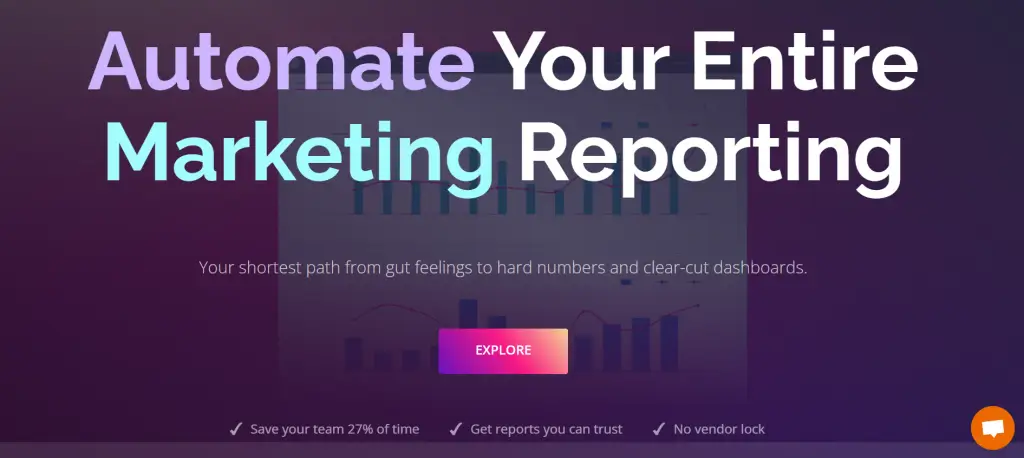
Homepage of Improvado
Improvado is a dynamic DBMS software that combines database and ETL functionalities for revenue data. The platform collects promotional and sales information from more than 300 diverse data sources and stores them in one location.
Marketing and sales departments are no longer restricted to a single storage medium courtesy of Improvado. The portal gives users access to hosted DBMSs such as BigQuery, Snowflake, or Clickhouse.
Teams or departments receive a complete solution that allows them to operate in a zero-code interface resembling a spreadsheet. Improvado is also less expensive and better suited to complicated data modifications than well-known data warehouse alternatives.
Advantages of Improvado
- Automatic procedures for deduplication, cleansing, and modification of information.
- More than 300+ resources are available for gathering all kinds of data.
- Real-time marketing displays can be created by integrating more than ten visualization tools.
Cost:
The pricing for Improvado is very flexible for users according to their business requirements. The final cost is dependent on the total numbers or sources you require for data collection. They assist with your plan and then the cost is finalized.
Also read: Top 10 UI Design Tools For Designers In 2023
- Microsoft SQL Server
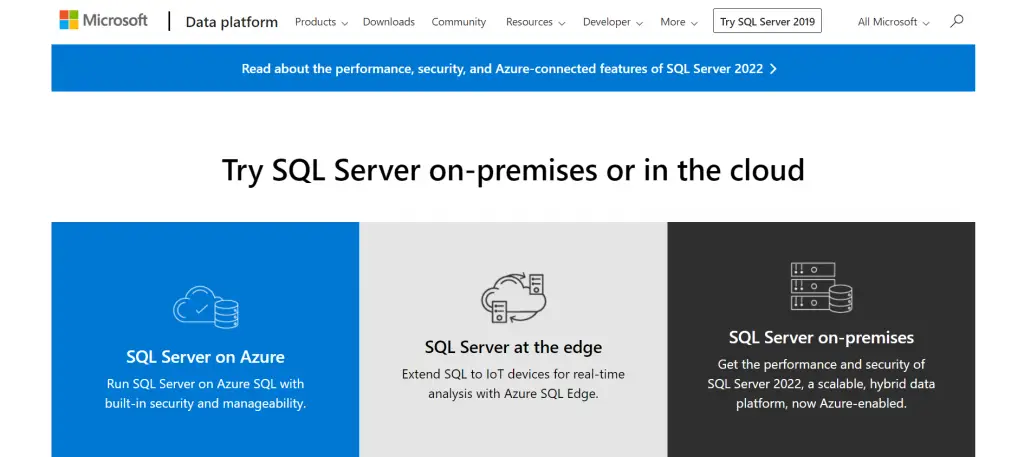
Homepage of Microsoft SQL Server
Among the most efficient DBMSs available is Microsoft’s SQL Server. Undoubtedly, a sizable user community is drawn to the application because it is free of cost. Users have benefited for years from its specially created graphical integration of the greatest database architectures.
Likewise to that; you may quickly add fresh or current project libraries to any diagrams you create with the assistance of this tool.
Advantages of using Microsoft SQL Server
- It allows you to set up a fresh database from scratch.
- Various kinds of tables, view data and designs can be created without syntax.
- It allows you to integrate with other programs and handle complicated queries easily.
Cost:
There are different versions of Microsoft SQL Server. The express and developer versions for personal use are free. Another 2016, version which is the most popular one costs $931 for a standard license. The 2017 and 2019 versions are of the same price.
- PostgreSQL
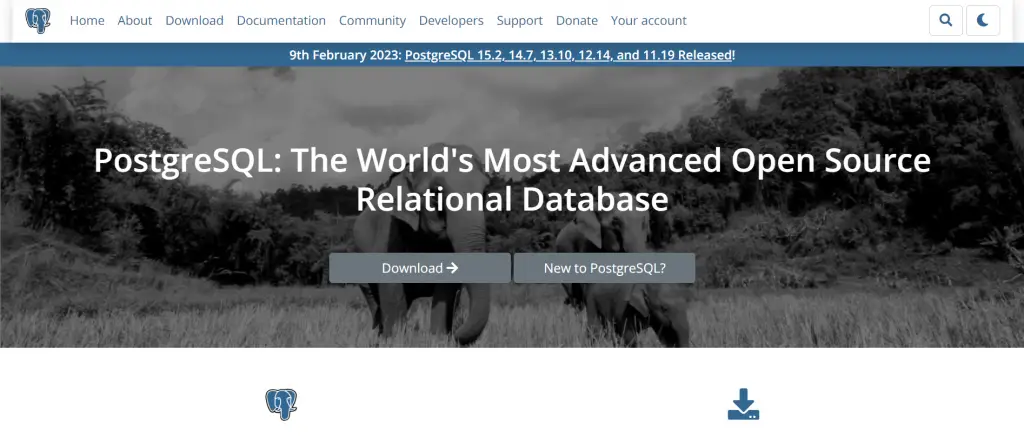
Homepage of PostgreSQL
Because of the exciting indexing and configuration choices, the open-source DBMS system attracts interest. If your regular business operations involve importing or exporting data, PostgreSQL is the best choice.
Python and JSON are the programming languages that are currently supported by PostgreSQL. Despite being a relational database system, clients have the freedom to build NoSQL databases.
A large variety of plug-ins have also been produced by the open-source community to enhance the capabilities of the software.
Advantages of PostgreSQL
- It allows you to easily store and manage data of higher volumes.
- The software provides tutorials and other resources which help to learn about the tool.
- The installation process is very simple on Windows and Linux.
Cost:
PostSQL is free of cost.
- Amazon RDS
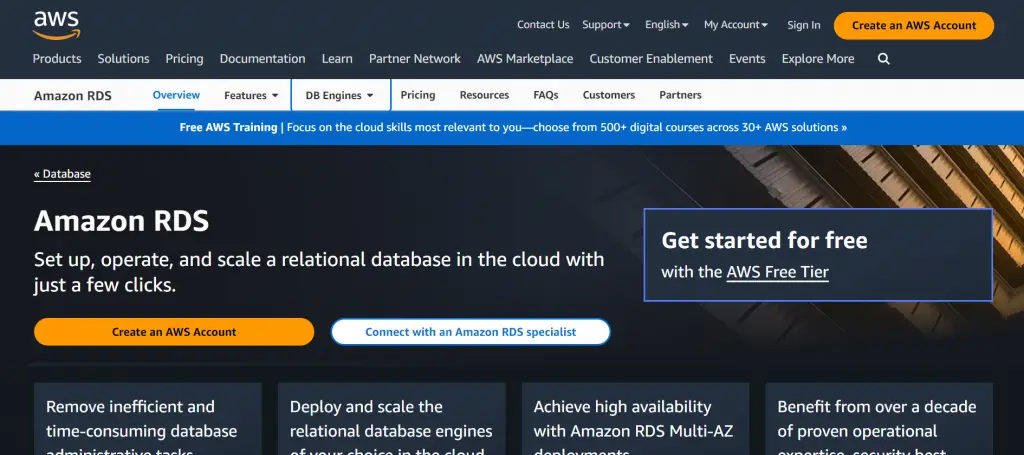
Homepage of Amazon RDS
Amazon Relational Database Service or Amazon RDS is one of the best DBMS tools. It provides a dedicated, encrypted channel, and an internal function that automatically backs up the data. Additionally, it is capable of resizing all of your database operations.
Advantages of Amazon RDS
- You have to only pay for those resources which you are using.
- With the help of a single database, you can process heavy workloads.
Cost:
Users can test out Amazon RDS at no cost. In actuality, there is no prerequisite for using the program. The available resources can be paid for using the on-demand technique. The AWS Simple Monthly Calculator allows you to quickly evaluate your monthly fee even though it may seem difficult.
- Oracle RDBMS
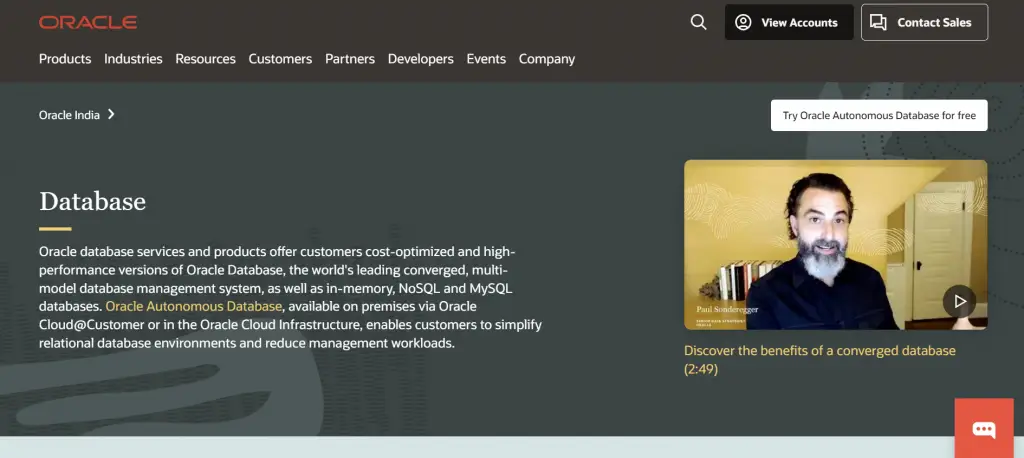
Homepage of Oracle RDBMS
The most recent version of the Oracle RDBMS tool handles data much faster, uses minimal storage space, and spans bigger databases. It is one of the best tools for object-relational DBMSs.
A powerful supercomputer or a personal computer can both run Oracle RDBMS. For example, the current designs inside the software cause a specific referential structure to be activated.
Advantages of Oracle RDBMS
- Sections can be made so that you have more operational control over your files.
- The transactional process is very smooth and provides data security.
Cost:
You must get in touch with Oracle’s customer care to learn about the price because it can change depending on the kind of business you run and your current software solutions.
Also read: Top Software Development Tools To Use In 2023
- RazorSQL
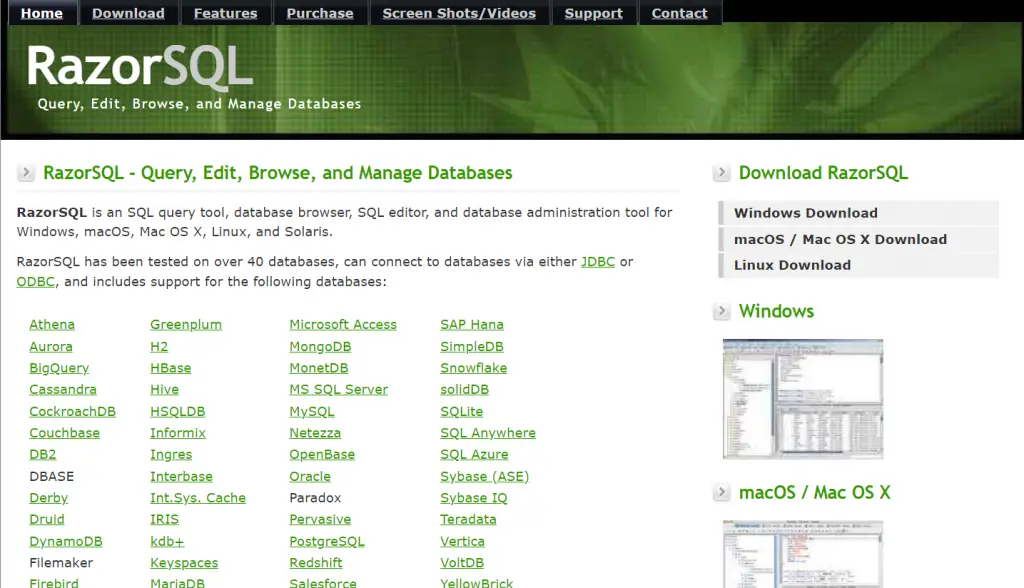
Homepage of RazorSQL
One of the most widely used search and database management tools is RazorSQL. Users may inspect databases, rows, unidentified keys, structural indexes, and tables with this tool. You can build, alter, or eliminate whole SQL statements according to your company’s requirements. The software includes adaptable importing options including Excel spreadsheets, extended records, and fixed-width records.
RazorSQL supports over twenty programming languages as of right now. It can simultaneously compare results from queries across many databases and table data. It is also simpler to check a variety of databases because the software doesn’t need any additional manual settings.
Advantages of RazorSQL
- Automated copy and selection mechanisms for various data types.
- For projects, users can make their own unique templates or use pre-existing ones.
Cost:
The annual price is currently $99.95.
- Microsoft Access
Microsoft Access only functions with Windows OS. It is indeed a fantastic tool for building unique databases in a variety of ways based on your company’s requirements. The IT industry can benefit from a reasonably priced database management system.
Advantages of Microsoft Access
- The best way to add online databases and analyze, report, or share with several other individuals at the same time is with customized Microsoft Access templates.
- Access to the entire Office Suite, including Word, Excel, and Outlook, is granted to users.
Cost:
They provide three different plans with two categories that are monthly and annual, which are provided on their official website.
- SQL Developer
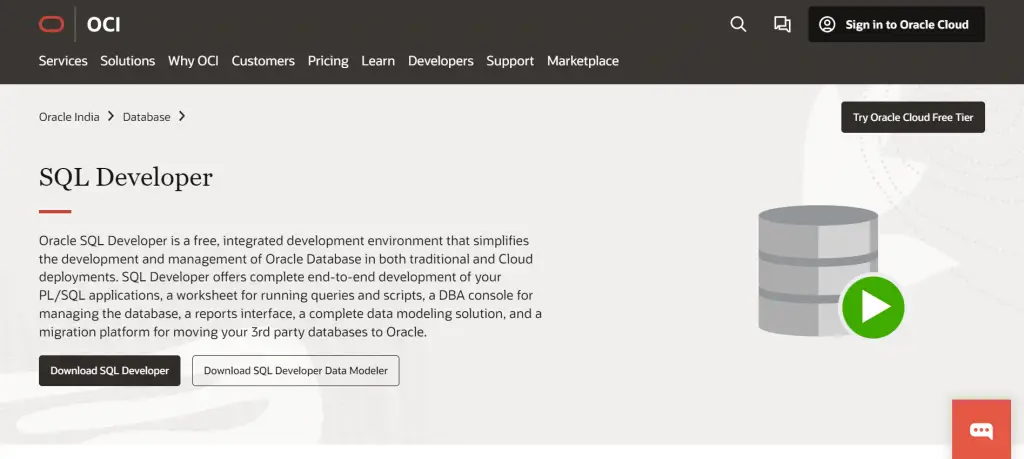
Homepage of SQL Developer
One of the most effective DBMS tools for designing, developing, and carrying out various other database administration tasks is the open-source DBMS tool, which is a favorite among developers.
Executing many queries quickly is the best feature of SQL Developer. As a result, users create inquiries in a variety of file types, including PDF, HTML, XML, and Excel.
Advantages of SQL Developer
- It enables individuals to make Oracle Database data management simpler.
- End-to-end database applications can be executed with SQL Developer.
- You can switch from any third-party database to Oracle with your database modeling solution.
Cost:
There is no cost involved for using and downloading SQL Developer.
- Informix
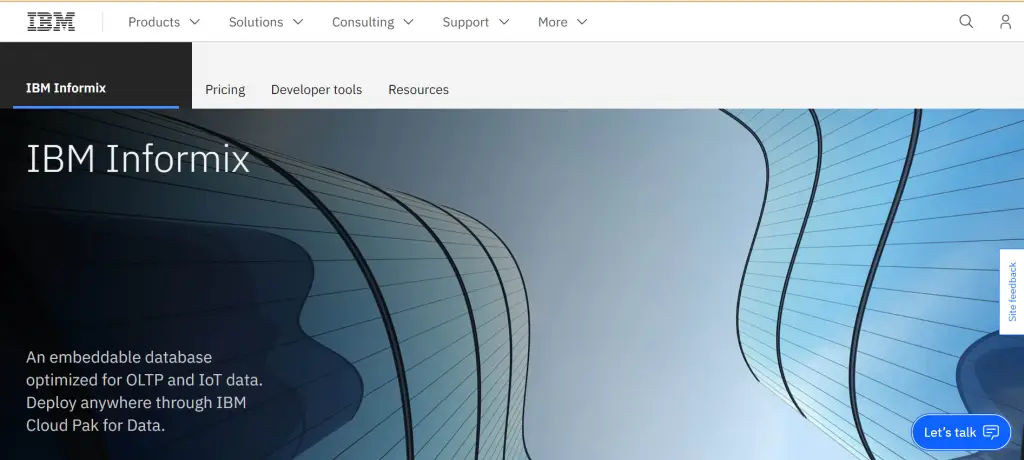
Homepage of Informix
For companies that require simultaneous and multi-threaded data analysis, “Informix Dynamics Server” is the ideal commercial DBMS tool. The program is perfect because it can be scaled up and down, and it also provides excellent in-depth support options.
Advantages of Informix
- The efficiency of its Online Transactional Processing (OLTP) is superior to other tools.
- Scalability of tiny computers to distributed nodes with multiple layers.
- In a particular time series, it can combine data items.
Cost:
The amount of data you wish to back up effectively determines the tool’s pricing.
- Altibase
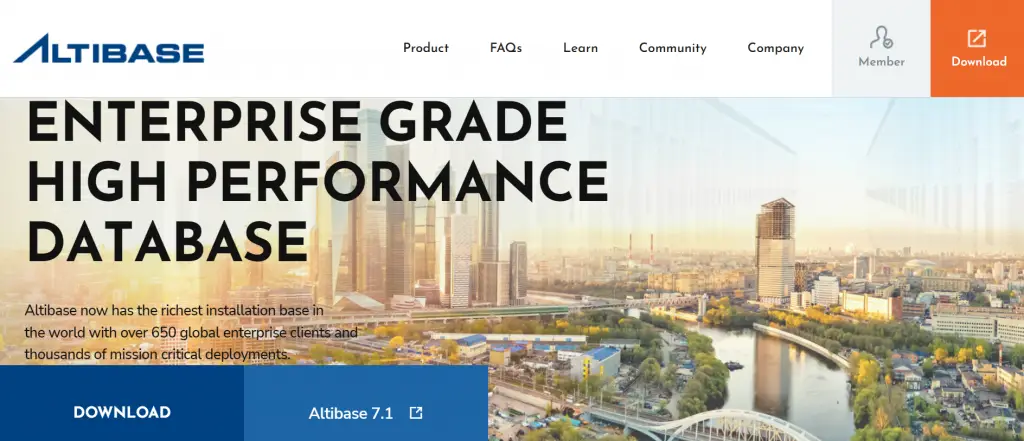
Homepage of Altibase
Advanced-level data handling capabilities are offered by the open-source DBMS technology. It also contains an in-memory database component that can store significant amounts of information on a singular disk.
Altibase is among the few hybrid DBMS solutions that offer extensive scale-out shading possibilities.
Advantages of Altibase
- It is more widely accessible across several businesses.
- Both the disk-resident database and the in-memory version are supported by the integrated processor.
Cost:
The DBMS program Altibase is open-source and has no operating or membership fees.
- EMS
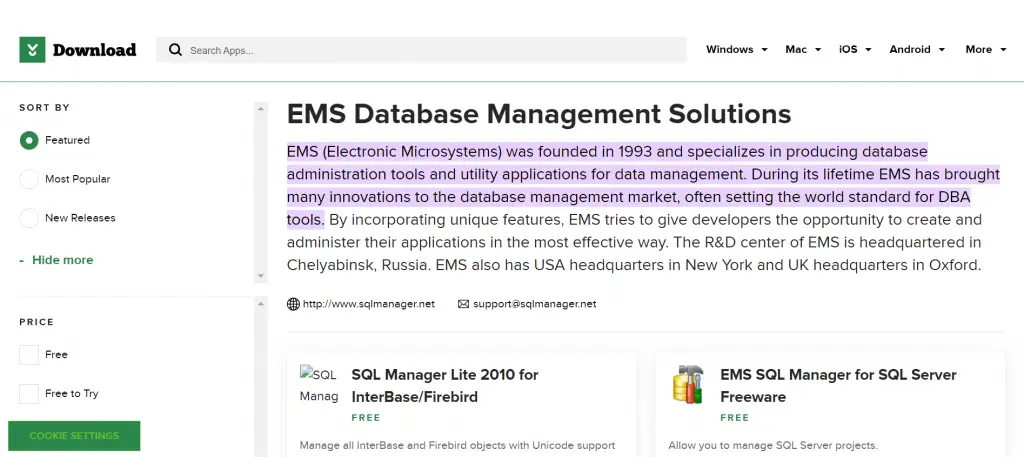
Homepage of EMS
You can construct distinctive data analysis elements with the assistance of “The EMS Database Management Platform”. You can handle the majority of business database management tasks with its strong vendor compatibility.
Likewise, the software is meant to help consumers who wish to manage existing databases in their primary capacity.
Advantages of EMS
- The database system’s efficiency is enhanced through simpler management.
- EMS integrates with several SQL tools.
- On databases, many SQL queries can be easily executed.
Cost :
The DBMS tool right now runs on version 5.0.2, which consumers can download for free of cost.
- Redis
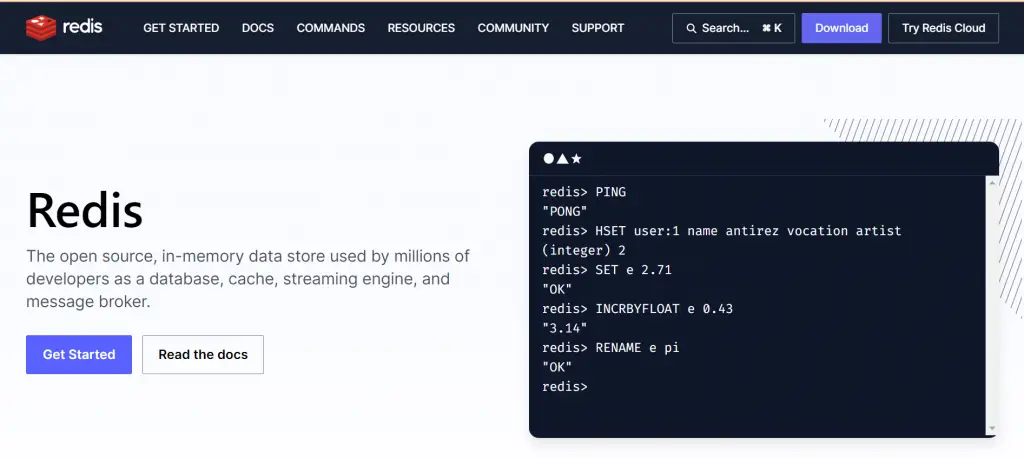
Homepage of Redis
The fact that Redis is written in ANSI C, which promises faster performance on all computer operating systems, may intrigue programmers. The DBMS tool also offers a variety of data types, including hashes, collections, and sets, all of which can handle advanced performance queries.
Additionally, it contains an internal storage database schema that can index flows, bitmaps, and paralogs.
Advantages of Redis
- The program is set up to replicate many databases.
- Automatic data segmentation is offered.
Cost:
Use of the Redis single and shared versions is free. To increase flexibility, you can also use RedisLabs’ corporate edition.
- IBM DB2
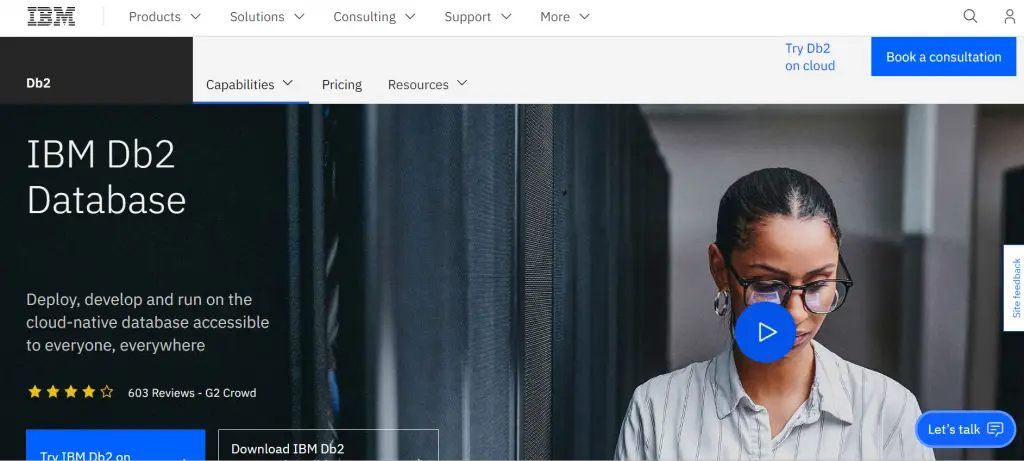
Homepage of IBM DB2
IBM DB2’s most recent version executes requests more quickly than ever. The majority of data science languages are now supported by the DBMS tool to deal with simple or complicated setups.
Consumers are drawn to this software mostly because of how simple it is to download and set up and how much data can be stored instantaneously.
Advantages of IBM DB2
- It provides AI-specific features to manage and organize complex data.
- Both personal and cloud systems are supported.
Cost :
The tool’s enterprise edition is available for free download and use. The Advanced edition costs $7,800 per VPC for 90 days, in contrast to the Standard edition’s $1,850 cost.
Also read: 14 Best DevOps Tools To Use In 2023
- Teradata
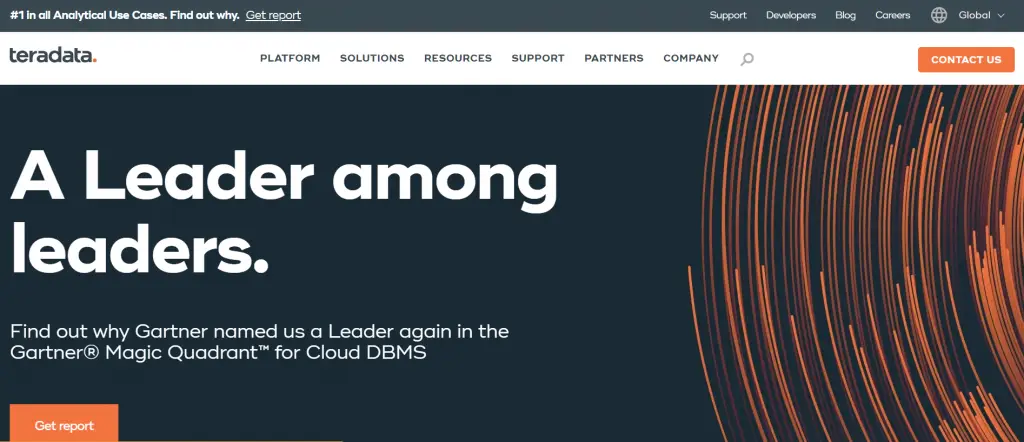
Homepage of Teradata
One of the first database management systems was Teradata. The import and transfer of data is processed with flawless velocity. It can disseminate huge databases instantly in addition to real-time processing. Effective operations at the industry level are recognized to be produced by the data analytics of DBMS tools.
Advantages of Teradata:
- To track or gather your information, it has thoughtfully constructed authorization controls.
- Flexible multi-variant data structures for the storage of combined data.
Cost:
Workload profiles determine the cost of the Teradata Vantage package. Nevertheless, the package offers alternatives for mobility, subscription-based pricing, and data management.
- Filemaker
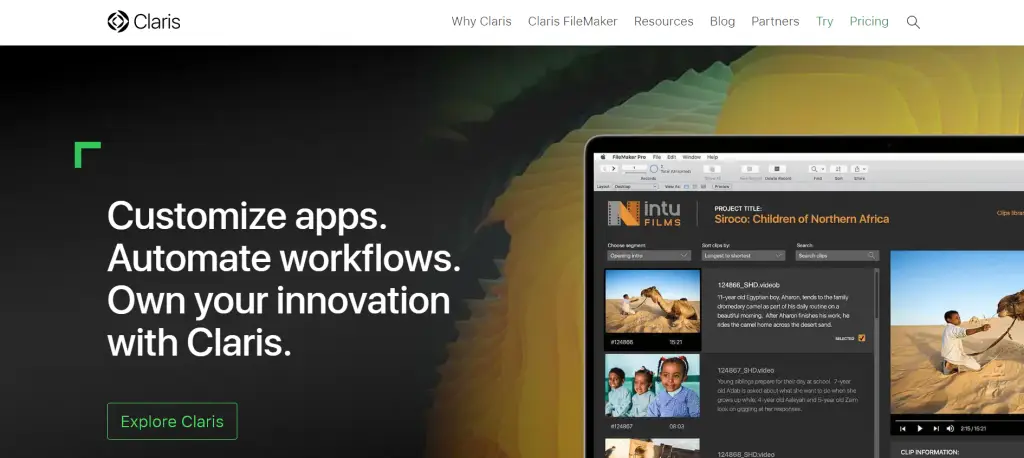
Homepage of Filemaker
Excellent SQL connection and exchange of data capabilities are available in FileMaker. The best feature of FileMaker is the ability to handle statistical reports, graphs, and invoices through the use of personalized layouts. As a result, the tool conveys a sense of expertise and professionalism in managing data.
Advantages of Filemaker
- To learn how to use the program, consumers can enroll in a personal course through Alliance Trainer.
- It has a great SQL connection.
Cost:
The cost of a FileMaker Pro single license is $329. However, the Advanced version costs $549, while the Server version costs $1,044.
- Advanced Query Tool
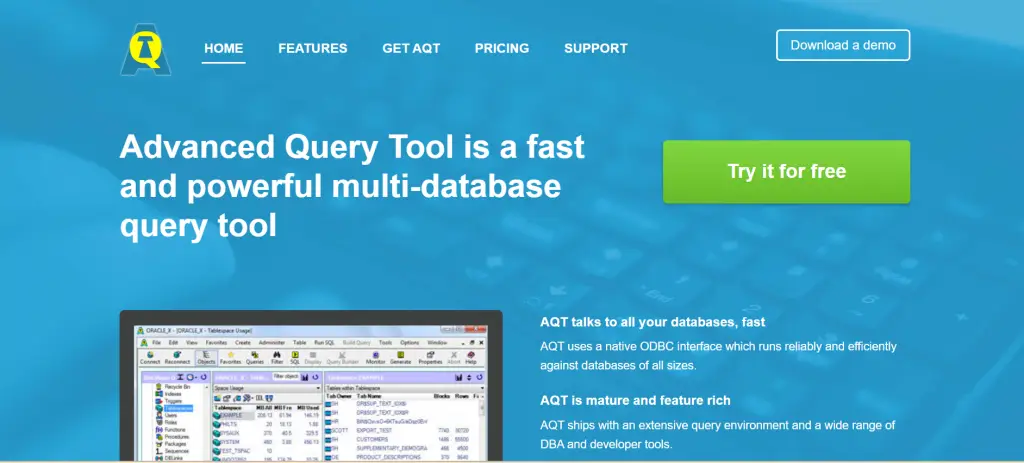
Homepage of Advanced Query Tool
The Advanced Query Tool is primarily employed by database managers and programmers to manage sophisticated data administration tasks, as the name implies.
Advantages of Advanced Query Tool
- To facilitate logging, database elements are shown in a structured tree.
- Add imaginative explanations to each item.
- You can emphasize graphic charts and searches.
Cost:
Its cost is determined by the number of licenses purchased. More information about the cost is available on their site.
- SQLite
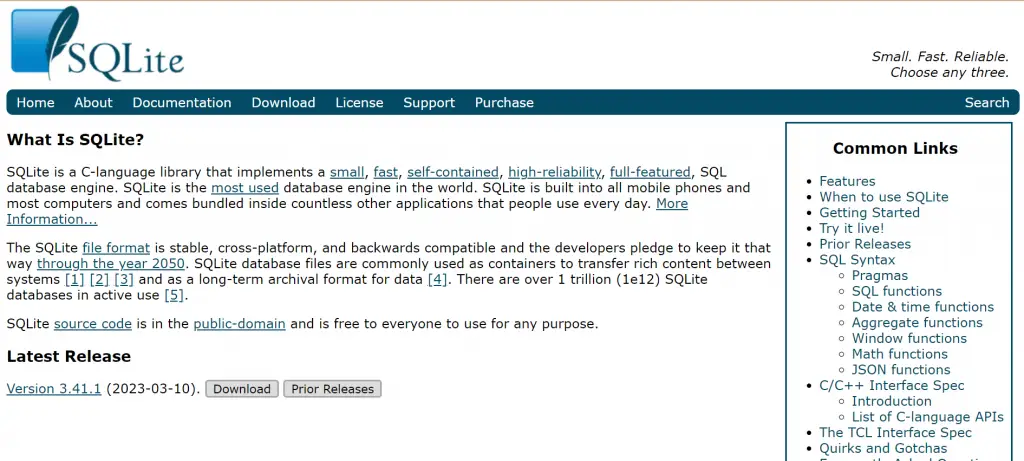
Homepage of SQLite
The purpose of SQLite is to serve small and medium-sized organizations (SMEs). Consumers may store and organize information relatively effortlessly thanks to its lightweight architecture and structure design.
The tool’s SQL engine is incredibly dependable and independent. The DBMS software is accessible on several mobile applications.
Advantages of SQLite
- Less time and storage are needed to put it up.
- A cross-platform data and file system format that is reliable and consistent.
Cost:
The DBMS tool’s most recent version is available for free download by users.
Also read: 10 Best Usability Testing Tools For Great User Experience
- Couchbase
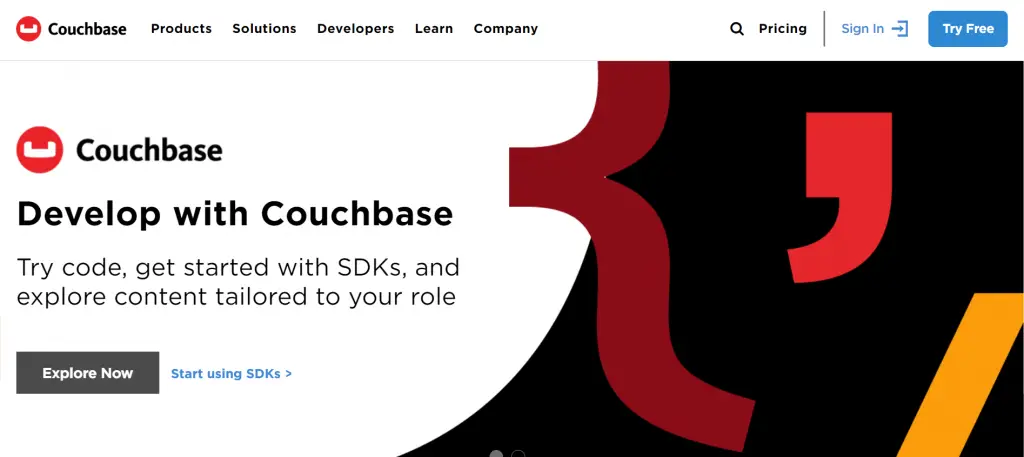
Homepage of Couchbase
The rapid and analytical growth of your databases is the central objective of this DBMS product. For every interactive package, you may create unique replies and establish database access patterns. Additionally, better scalability possibilities for users lead to continual data supply mechanisms.
Advantages of Couchbase
- The transmission frequency of small and medium-sized databases is excellent.
- Corruption of data is prevented by the design.
Cost:
There is no subscription fee for using Couchbase.
- Robot 3T
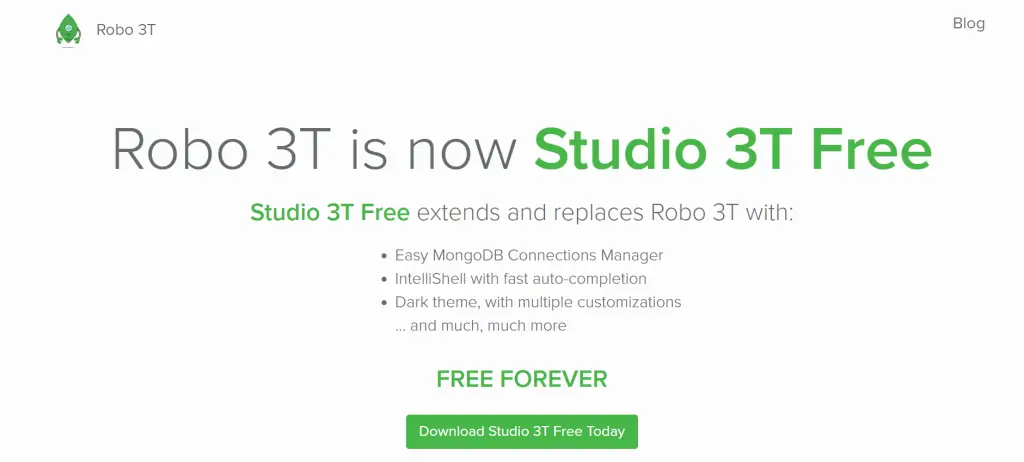
Homepage of Robot 3T
Among the dynamic DBMS programs that can manage a lot of workflow is Robot 3T, also called Robomongo in the past. It is nearly error-free and includes robust built-in functionality.
The tool is praised most, though, for its visually appealing drag-and-drop query construction capabilities.
Advantages of Robot 3T
- Automating repetitive chores is possible.
- Operators of IntelliShell can auto-complete queries.
- Throughout every level and segment, queries can be constructed and split.
Cost:
The Studio 3T and Robo 3T versions are available for free installation by consumers.
- Cloudera
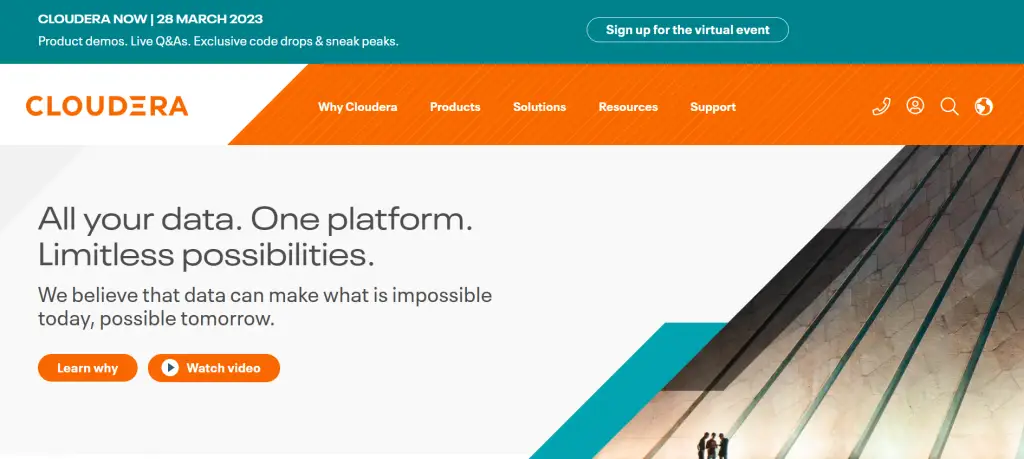
Homepage of Cloudera
For better data handling and protection, big businesses use Cloudera. The tool is very effective at running separate analytical techniques and has superior efficiency. It also features algorithms for machine learning to comprehend and control complicated data patterns.
Advantages of using Cloudera:
- Users benefit from the low likelihood of data lock-ins.
- A strong connection boosts productivity while cutting costs for businesses.
Cost:
The cheapest big data processing package costs $4000 annually. For more information regarding the pricing, you can check their website.
Also read: 12 Best Free Wireframe Tools For UX Designers In 2023
- Hammer DB
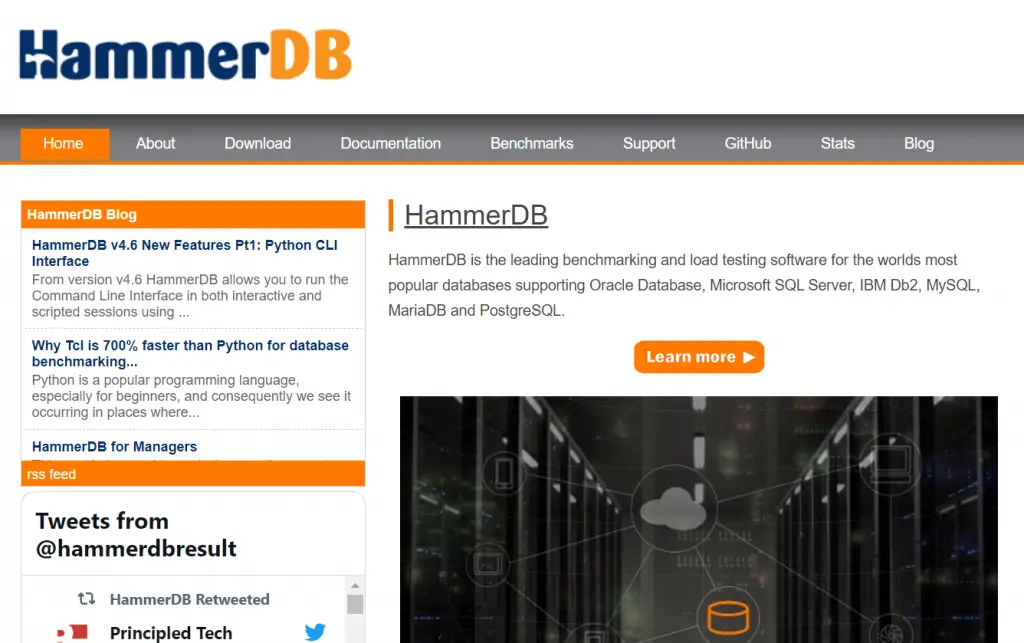
One of the least well-known standard database technologies, Hammer DB supports a wide range of programming languages and applications. It contains a multi-threaded user interface that enables automated data testing for users. Similar to this, you can perform a custom testing process in accordance with industry norms.
Advantages of Hammer DB
- Users can instantly utilize indexes to expedite query processing.
- The utility can be set up as a legitimate program or with third-party add-ins.
- It includes many choices for data modeling that can be used to retain or retrieve information that is exclusive to your divided range.
Cost:
Currently, running the open-source application on SQL Server is free.
- CoScale
The ability of CoScale to track and enhance massive data programs is its key asset. Shareable among several users is the important performance indicator window. The burden on CoScale can be split between web developers, technicians, marketing professionals, and operation managers.
Advantages of CoScale
- It can monitor performance even when there are technical or commercial incidents.
- It can produce a thorough evaluation of performance indicators.
- It provides simple, rapid, and light data optimization.
Cost:
The equipment has a $30 beginning price for up to 20 containers.
Also read: Important Tools For App Development
Conclusion
Regardless of whether you are a newbie user or a professional developer, your major point of focus when selecting a DBMS from the ones listed above must be focused on the execution of performance and maintenance. Check the program’s capacity for accommodating new users as well.
To improve your database programming skills, it is a smart option to analyze how data searches are integrated and evaluate technological options. The final consideration for choosing a database management system software must be the consumer’s responsibility.
FAQs
Ans. When picking out the best database software, the following things can be kept in mind:
-Security features
-Integration with other software
-Performance
-Liability
-Cost of usage
-Resources and functions
-Business requirements
Ans. Yes, Google SQL is a free software database that can be used from Google Cloud Console.
Ans. According to stats of August 2022, Oracle is the most commonly used database with a ranking score of 1260.8.
Ans. Amazon uses databases like MySQL and PostgreSQL.

